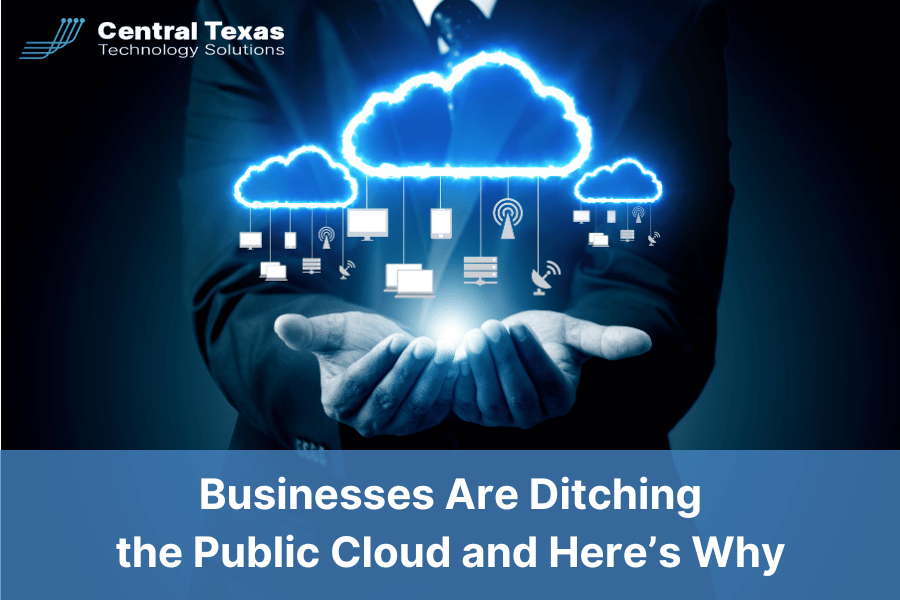
The Shift Away from the Public Cloud
Cloud computing has revolutionized how businesses operate, offering scalability, flexibility, and accessibility. However, companies that once eagerly embraced public cloud solutions are now rethinking their approach. A recent Citrix survey found that 42% of organizations have migrated at least half of their cloud-based workloads away from the public cloud.
So, why the shift? The driving factors behind this cloud exodus include cost concerns, data privacy issues, and performance limitations. As businesses evaluate their cloud strategies, many are turning to hybrid or on-premises solutions to regain control, enhance security, and optimize costs.
Public Cloud Costs Are Adding Up
One of the biggest reasons businesses are leaving the public cloud is cost. While the pay-as-you-go model offered by major providers like AWS, Azure, and Google Cloud may seem affordable at first, expenses can quickly spiral out of control.
Hidden Costs of the Public Cloud
- Egress Fees: Moving data out of the public cloud can be costly, making it difficult to migrate workloads elsewhere.
- Unpredictable Expenses: Pay-as-you-go pricing means costs fluctuate, making budgeting more challenging.
- Vendor Lock-In: Switching providers can be expensive and time-consuming, limiting flexibility.
Many businesses are opting for on-premises or hybrid solutions to gain financial predictability and long-term savings.
Data Privacy and Security Risks in the Public Cloud
With increasing cyber threats and regulatory pressures, businesses are prioritizing data security. Industries such as healthcare, finance, and education operate under strict compliance standards that the public cloud doesn’t always meet.
Security Challenges in the Public Cloud
- Limited Control: Businesses must rely on their cloud provider’s security policies.
- Compliance Concerns: Regulatory requirements like HIPAA and GDPR can be harder to enforce in a public cloud environment.
- Increased Risk Exposure: Shared infrastructure increases vulnerability to cyber threats.
Organizations seeking greater control over data security are transitioning to private or hybrid cloud environments, where they can implement tailored security solutions to mitigate risks.
Performance Issues Are Driving Businesses Away
For industries that rely on high-speed data processing, even slight delays can have serious consequences. Public cloud infrastructure, often shared among multiple users, can introduce latency and impact performance.
Performance Drawbacks of the Public Cloud
- Latency Issues: The physical distance between users and cloud data centers can create delays.
- Shared Resources: Heavy network traffic can reduce performance reliability.
- Limited Customization: Businesses can’t optimize infrastructure to meet specific performance needs.
By migrating critical workloads to private data centers or on-premises solutions, businesses can achieve faster, more reliable performance tailored to their operational demands.
Is It Time to Reevaluate Your Cloud Strategy?
If your organization is experiencing escalating cloud costs, security concerns, or performance bottlenecks, it may be time to reassess your cloud strategy. Here’s how to get started:
- Analyze Your Cloud Costs – Review your cloud spending and identify areas of inefficiency.
- Conduct a Risk Assessment – Evaluate security vulnerabilities and compliance challenges in your public cloud environment.
- Explore Hybrid or Private Cloud Options – Determine whether a different cloud model could provide better control, security, and cost efficiency.
By taking a proactive approach, businesses can ensure they are using the cloud in a way that aligns with their long-term goals.
FAQ: Common Questions About Moving Away from the Public Cloud
1. What’s the difference between public, private, and hybrid cloud solutions?
- The public cloud is managed by third-party providers like AWS and Azure, offering shared resources.
- The private cloud is dedicated to a single business, providing greater control and security.
- The hybrid cloud combines both, allowing businesses to keep sensitive workloads private while leveraging the public cloud for other applications.
2. Can moving away from the public cloud really save money?
Yes, especially for businesses with high data transfer needs. Public cloud costs can be unpredictable, while private or hybrid cloud solutions allow for more predictable and often lower long-term expenses.
3. How do I know if a hybrid cloud approach is right for my business?
If your business needs to balance scalability with security and cost control, a hybrid cloud strategy can provide the best of both worlds. Conducting a thorough IT assessment can help determine the best approach for your needs.
Contact CTTS today for IT support and managed services in Austin, TX. Let us handle your IT so you can focus on growing your business. Visit CTTSonline.com or call us at (512) 388-5559 to get started!
